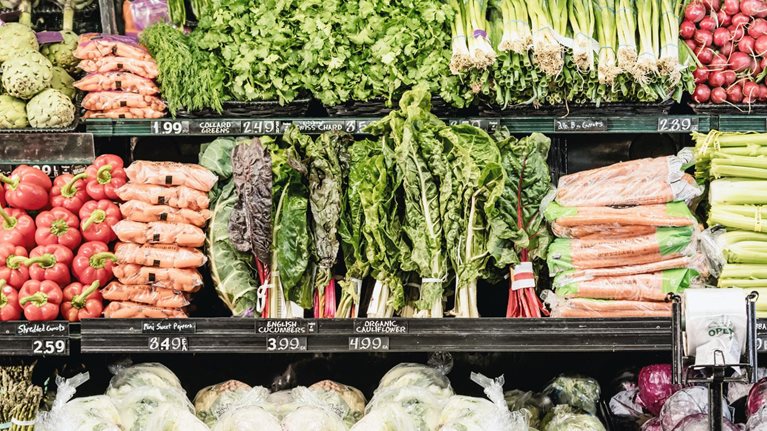Since farmers first began trading their fresh produce, they’ve looked for ways to reduce product loss from various sources including damage and expiry. They’ve used a range of tools to reduce this “shrink,” such as more accurate demand forecasts, optimizing and speeding transport, displaying products in more appealing ways, extending shelf lives, and adjusting prices frequently to maximize profits while clearing the shelves before goods spoil.
Before the COVID-19 pandemic and accompanying economic downturn, shrink consumed 2 to 3 percent of a typical grocer’s revenue—a significant share in an industry where razor-thin margins are common. Shrink is now rising in some regions and product categories as shoppers’ needs and preferences change faster than ever before. In ready-to-eat and ready-to-heat, for example, shrink has risen to 5 to 15 percent of revenues, significantly eating into profits. Accurate forecasting is more difficult in marketplaces roiled by the pandemic—a rolling four-week average is a better predictor of sales than year-over-year comparisons, for example.
Recognizing the challenge, leading grocers around the world are already preparing for the “new normal.” By harnessing 21st-century tools, mastering new approaches, and even going back to basics, they’re giving shoppers more of what they want, in every store every day, while reducing shrink by 20 to 30 percent and reinforcing their bottom lines.
Industry leaders pursue five shrink-reduction solutions
Grocers are finding innovative new ways to reduce shrink in marketplaces transformed by the pandemic. Their approaches fall into five main categories: advanced analytics to improve forecasting; more dynamic use of displays and shelf space; Cryovacing and vacuum packing; apps to clear short-dated products; and improvements in upstream operations and inbound quality control:
-
Forecasting sales with advanced algorithms: Ordering the right amount of each product is the natural starting point of a shrink-optimization effort. Forecasting techniques and algorithms that rely purely on historical data no longer reflect today’s far more dynamic grocery environment. People shopping during the pandemic have drastically changed the composition of their baskets, for example, as they visit stores less frequently, cook more at home, explore online and delivery channels, and adapt to their own new normal.
Some grocers are gathering, cleaning, and exploring more internal and external data to make far more accurate demand forecasts, reducing shrink and stockouts, and right-sizing inventory to save space, labor, and capital. Some are even harnessing predictive analytics to help category managers adjust pricing, promotions, and assortment every day in each brick-and-mortar and online store. Recognizing that daily forecasts are relatively crude, especially in ready-to-heat and other time-sensitive categories, some grocers are improving forecast granularity to adjust decisions by the hour or even minute. A leading grocer in Eastern Europe, for example, harnessed new advanced analytics tools to improve forecasting and adopted controls to optimize shrink in ready-to-eat categories, where most products have shelf lives of just a couple of hours. Accurate hourly forecasts helped managers schedule supplier deliveries at the right times and plan in-store production, helping to reduce shrink by 15 percent and improve product quality for customers.
-
Adjusting layouts and shelf space throughout the day, week, and year: Optimizing the quantities of every SKU on each shelf is a key to reducing shrinkage. New modular solutions allow for dynamic resizing of displays throughout the day to address variations in footfall, including the reduction in customer flow in most stores toward the end of each day. Similarly, staff can manage monthly assortment and sales-volume variations using shelf-planogram design that combines projected sales with the targeted frequency of shelf replenishment at the SKU level. This helps staff overcome their instinctive impulses to overfill shelves, which can generate shrink, while avoiding stockouts and keeping displays attractive.
A leading international grocer recognized this opportunity and corrected staff behaviors by designing standard tools and processes, based on these principles, to size shelf space in the fresh sections, and by systematically training employees on these new standards. Shrinkage fell by 5 to 15 percent in less than two weeks, and customers praised the revamped image and attractiveness of the new displays and selling area.
- Extending shelf life: Around the world, leading grocers are doubling down on investments in shelf life, such as vacuum packing and Cryovac, particularly to reduce the shrinkage of high-value products such as those in meat, fish, and deli departments. Some are also using vacuum packaging to marinate meats and generate other value-added offerings, and to improve selection and quality in food delivery. The technology allows consumers to store products longer in freezers and use them only when they’re ready for thawing and consumption.
-
Providing apps for bargain hunters: Most grocers have markdown clearance procedures for short-dated produce, meat, and seafood, but customers don’t always know where to look for bargains, which can mean suboptimal clearance. Some grocers are using advanced analytics to manage markdowns in conjunction with apps that provide shoppers with up-to-date information on discounts and remaining shelf life. Employees review products about to expire and post those reviews to the app along with a discounted price, allowing bargain hunters to skim and purchase. In some cases, they can make purchases directly in the app, providing the grocer with revenue even if the customers never show up. Those who do are directed to a customer-service or “click and collect” area where they pick up the product. This type of innovation drives incremental store visits and typically leads to additional purchases.
Several grocers in North America experimenting with this are finding shrink rates falling by more than 20 percent, depending on the markdown depth and items sold.
-
Reevaluating upstream operations and inbound quality control in distribution centers: Many grocers are going back to basics, improving cold chains and using technology to monitor conditions at every step. Some are making these changes in parallel with continuously evolving processes and mechanisms to limit risks to employees and customers. Old tactics are being married with new technology to provide continuous insights into the end-to-end product life cycle.
A retailer in the Middle East reduced shrink for the most sensitive categories, such as berries, by more than 30 percent by maintaining the optimal temperature from source to store through storage, loading, and unloading. Staff started by optimizing the speed and order of pallet loading and unloading from trucks to minimize the time that sensitive products spend outside temperature-controlled areas. They now conduct regular audits to ensure that practice doesn’t slip and that operational improvements, and therefore savings, are sustained over time.
How to test concepts in stores
Grocers can test most of these concepts quickly and at low cost. We recommend beginning with a review of current shrink-management practices to identify improvement opportunities and then prioritizing the most promising solutions. Grocers can take three basic approaches:
- Build it in-house: Bespoke solutions can work wonders because they’re customized for specific retail footprints, staff and management practices, and regional context. Design and implementation can be led by employees who are connected and knowledgeable about the specificities of the company and can strengthen practices and end-to-end operations, even beyond shrink, throughout implementation. These custom solutions require time and financial resources that might be invested more profitably somewhere else, however—and they can require expertise that few retailers may have in-house today.
- Outsource: Hiring a vendor often seems like an attractive option and provides access to proven systems and solutions. Some solutions can be tested and launched quickly, helping companies benefit from early adoption. But choosing the wrong vendor can be costly: several retailers have told us that they lost valuable consumer data and became beholden to providers. Others realized that some plug-and-play solutions did not build the capabilities of in-store staff, hindering their ability to continuously improve standards and processes. We recommend that grocers consider these and other trade-offs carefully.
- Partner with companies on selected topics: Many grocers are making quick progress by breaking shrink-reduction efforts into manageable, tactical solutions and working with carefully chosen third parties. This preserves their ownership of end-to-end customer and employee experiences.
Next steps
A grocer can size shrinkage-reduction opportunities with a rapid diagnostic combining hard financial metrics and observations in selected stores and warehouses—a no-regrets move that can lead to surprising discoveries. In addition to the potential financial benefits of shrink reduction, the diagnostic can include assessments of product quality and shelf and display appeal.
An executive at a leading grocer said his team’s diagnostic effort “gave us a completely different way to look at operational improvements and their impact on client experience and company profitability.”
Shrink is a perennial topic with grocers, and many think they have it under control. But industry leaders are using powerful new tools and techniques to delight customers, bolster financial results, and leave slower-moving competitors behind. Given low operating margins, grocers should consider a wider range of opportunities to stretch every dollar in these uncertain times.


